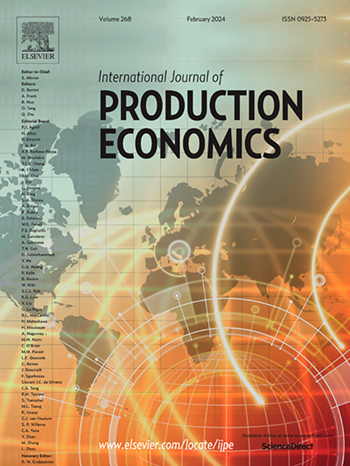Blockchain-enabled downward traceability to combat gray market
IF 9.8
1区 工程技术
Q1 ENGINEERING, INDUSTRIAL
引用次数: 0
Abstract
Cross-market brand owners have long been troubled by the gray market issues. This study examines a dual distribution channel model involving one brand owner, two retailers, and two independent markets. In this model, low-end retailers privately transfer products from the low-end to high-end markets, creating a gray market. The brand addresses this behavior by adopting blockchain. We examine the impact of blockchain on gray market invasion, firm decisions, consumer surplus, and social welfare through downward traceability. The results show that gray market invasion consistently benefits low-end market retailers while disadvantaging high-end market retailers. It is profitable for the brand to allow gray market invasion when the willingness to pay in the low-end market is substantial. Blockchain adoption can effectively inhibit gray market invasion, benefiting high-end market retailers while harming low-end market retailers and the brand, depending on the cost and penalty fee involved with blockchain implementation. When the cost of blockchain adoption is relatively low, brand adopting blockchain may achieve a win-win-win market situation. However, although consumer surplus and social welfare can benefit from a gray market invasion, adopting blockchain reduces this impact, especially when cost of blockchain adoption and penalty fee are both relatively high.
利用区块链向下溯源打击灰色市场
长期以来,灰色市场问题一直困扰着跨市场品牌所有者。本研究探讨了一个品牌所有者、两个零售商和两个独立市场的双分销渠道模式。在这一模式中,低端零售商私自将产品从低端市场转移到高端市场,形成灰色市场。该品牌通过采用区块链解决了这一行为。我们研究了区块链通过向下溯源对灰色市场入侵、企业决策、消费者剩余和社会福利的影响。结果表明,灰色市场入侵始终有利于低端市场零售商,而不利于高端市场零售商。当低端市场的支付意愿很强时,允许灰色市场入侵对品牌来说是有利可图的。区块链的应用可以有效抑制灰色市场的入侵,使高端市场零售商受益,而低端市场零售商和品牌受损,这取决于区块链实施所涉及的成本和惩罚费用。当采用区块链的成本相对较低时,品牌采用区块链可能会实现三赢的市场局面。然而,虽然消费者剩余和社会福利可以从灰色市场入侵中获益,但采用区块链会减少这种影响,尤其是当采用区块链的成本和罚款都相对较高时。
本文章由计算机程序翻译,如有差异,请以英文原文为准。
求助全文
约1分钟内获得全文
求助全文
来源期刊
CiteScore
21.40
自引率
7.50%
发文量
266
审稿时长
52 days
期刊介绍:
The International Journal of Production Economics focuses on the interface between engineering and management. It covers all aspects of manufacturing and process industries, as well as production in general. The journal is interdisciplinary, considering activities throughout the product life cycle and material flow cycle. It aims to disseminate knowledge for improving industrial practice and strengthening the theoretical base for decision making. The journal serves as a forum for exchanging ideas and presenting new developments in theory and application, combining academic standards with practical value for industrial applications.

 求助内容:
求助内容: 应助结果提醒方式:
应助结果提醒方式:


